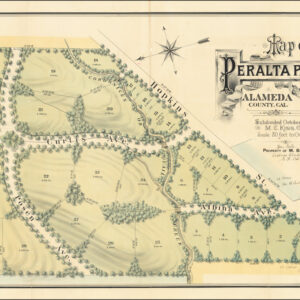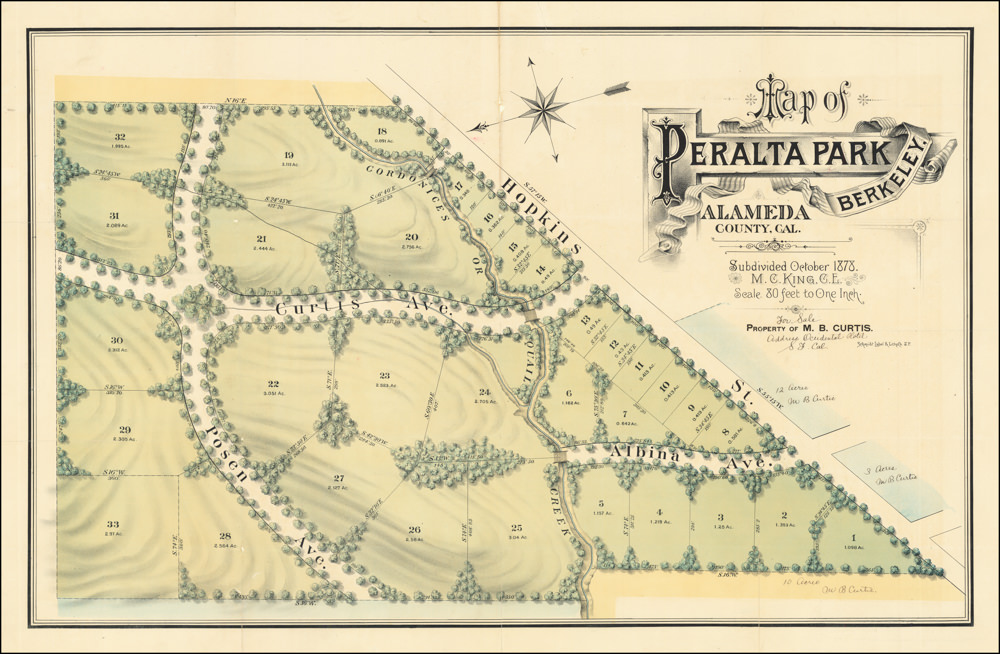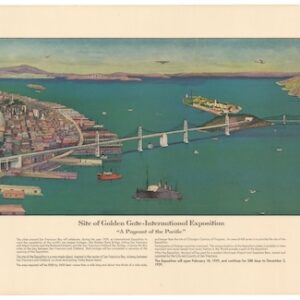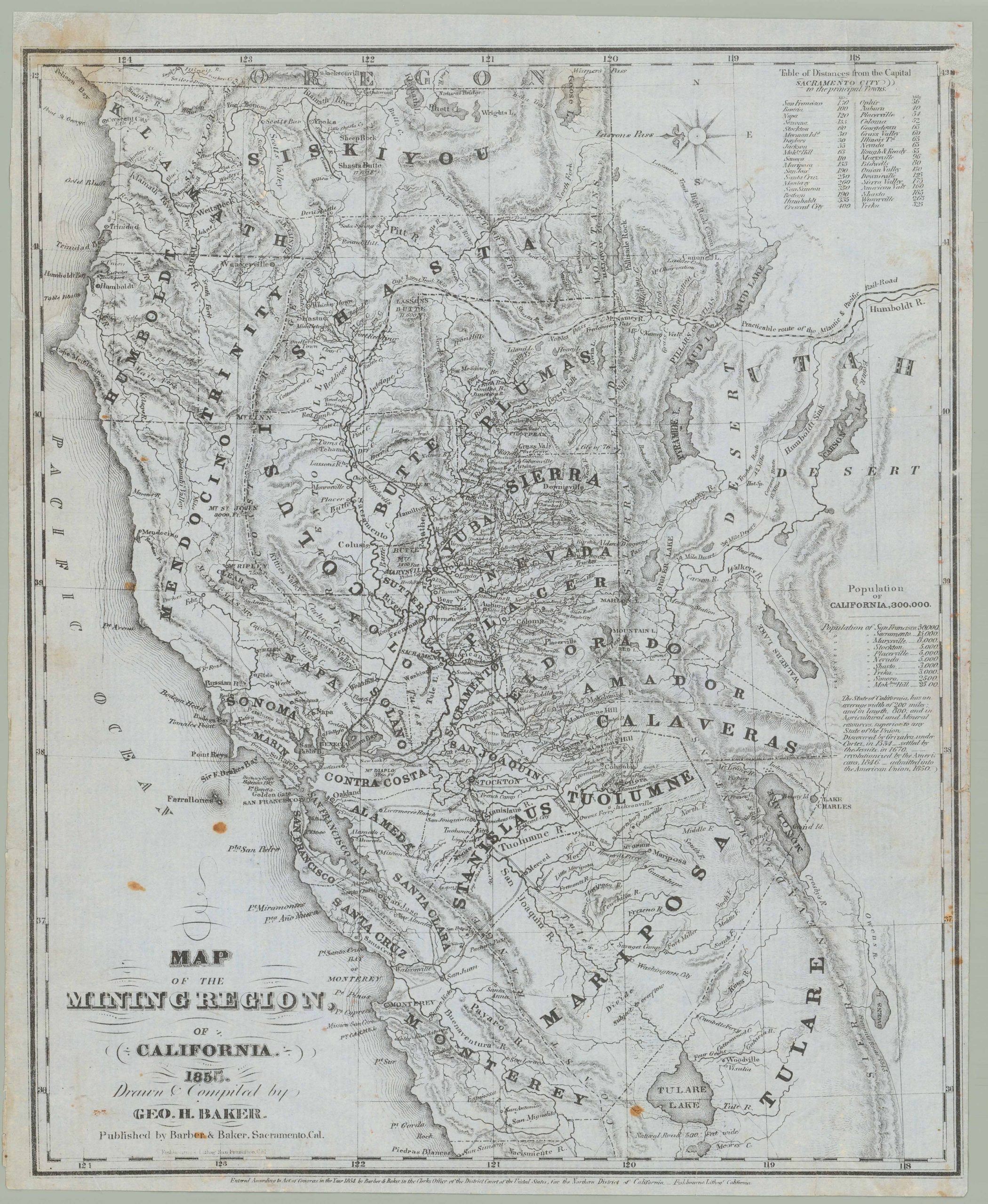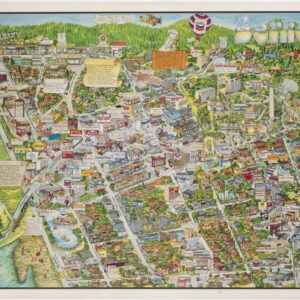A pioneering map of California, in which the entire state is mapped in mineralogical and geological terms for the first time.
Preliminary Mineralogical and Geological Map of the State of California Issued By The California State Mining Bureau. January 1st 1891.
Out of stock
Description
This enticing and highly visual map, which represents the first comprehensive geological chart of California ever produced, should be viewed as the direct result of the wealth generated a few generations earlier, during what has come to be known as the California Gold Rush. It was published in San Francisco in 1891 and was clearly intended for display and project planning. The map was produced by the California State Mining Bureau, which had been established in 1880. The Mining Bureau had in turn grown from the California Geological Survey, formed in the immediate wake of the 1849 Gold Rush and the establishment of statehood for California one year later (Hayes 2007: 128-29). All three events were of course directly related to one another.
The compilation of an extremely complex map such as this was not an easy matter. It sought to surpass other American mineralogical charts in both quality and accuracy, an ambitious goal that required not just all geological survey data to be compiled and analyzed, but also the implementation of extensive new surveys in order to unequivocally establish stratigraphy, mineralogical composition, and the distribution of metals throughout the state. All of this was made possible when two trustees of the Mining Bureau decided that such an endeavor was long overdue and the logical next step for developing a stronger intra-state mining industry.
These trustees were former California Surveyor General Harry I. Willey and surveyor Julius C. Henkenius. Henkenius was chosen to lead the survey teams and ultimately accumulated the data that would allow for the construction of this important map. Yet despite no less than six people accredited on the map itself, we find neither Willey nor Henkenius mentioned. Instead, the map has been issued in the name of the State Mineralogist at the time, one William Irelan Jr., and with the support of the Mining Bureau’s Board of Trustees, to which it appears Willey no longer belonged at this stage. Despite the omission of the primary instigators and executors behind this map, Irelan did acknowledge the crucial contributions made by Willey and Henkenius in his 10th Annual Report of the State Mineralogist (1890, p. 21), which is where the map was also originally issued.
While such reports constituted mandatory reading for both private and government stakeholders with an interest in geology and geological engineering, and the map no doubt was an integral tool for most mining operations in the late 19th and early 20 the century in California, it was not something that was widely circulated or collected outside mining or geology circles. And those in circulation would often be worn out from use before ending up in someone’s library or archive. Consequently, it has become one the most scarce and iconic maps of California in the 1890s, and an absolute rarity on the open market.
Details
This impressive map was prepared by the California State Mining Bureau and published as a lithograph in four sections, which were then combined and backed on linen for easy use and long durability. It was compiled at a scale of 1:750,000, which essentially meant that an inch on the map equals 12 miles as the crow flies. The map itself is extremely detailed. Rivers and creeks have been carefully charted and named; railroads, roads, flirts, and settlements have all been included. A tight grid overlies the entire map, with numbered graticules running through the center and along the edges for easy grid identification.
The map was a highly visual, yet purely functional product, serving to provide mining conglomerates and other interested parties with detailed information on the geological and mineralogical composition of the state, along with crucial logistical elements such as land ownership and government approved land grants. The map distinguishes stratigraphy and eight distinct mineralogical formations, which was a much higher degree of detail than any map of California could boast at this stage. The result was a reliable high-quality impression of the geological formations in which ore and other mineral occurrences were to be found.
Among the map’s many innovative and useful features is a color coding that shows the primary rock formation types, as well as nine categories of rock formations. These are listed in a small legend in the lower left corner of the map and offers ‘EXPLANATIONS’ for both rock formations and known mineral deposits. In the first section, the nine rock categories are listed and linked to the color coding applied on the map itself. These include compositions such as Granitic Rocks (orange); Limestone (green); Volcanic Rocks (pink); Auriferous slates (blue) and gravels (gold); Metamorphic cretaceous rock (dotted green); Unaltered Sandstones, Shales, Conglomerates (uncolored) and Quarternary and Recent deposits (dotted yellow). The last category is the telling ‘unexplored portions’ (blank), which may be perceived as areas of potential opportunity. Yet upon closer inspection of the map, we find that the actual land falling under this category is very limited. It can be hard to distinguish the uncolored ‘sandstones, shales and other conglomerates’ category from the unexplored portions, but in essence the latter only consists of small pockets along the Nevada and Oregon border. The larger swathes that are blank or uncolored generally follow ridge lines and outcrops and constitute the geologically younger strata that overlies much of California’s bedrock.
Below the color coding of the rock formations themselves, we find a numbered key to the known mineral deposits identified on the map. In order of appearance, this key lists the following twenty substances: Gold, Silver, Silver and Lead, Quicksilver, Copper, Iron, Coal, Tin, Petroleum, Antimony, Bismuth, Manganese, Chromic Iron, Sulphur, Borax, Salt, Carbonate of Soda, Asphaltum, Bituminous Rock, and Gypsum. Had one not already been fully aware of the abundance of natural resources that California offered, this list alone would clearly cement that impression. Immediately to the left of the color coding is a larger label that provides the names, county affiliations, and altitudes of almost four hundred peaks, including Mt. Whitney (15,000 ft) and Mt. Goddard (14,000 feet) as the tallest.
The third and final legend on the map is found along the right fringe, just under the elaborate title. Here, a list of 551 Private Land Grants are noted, reflecting an up-to-date list of the Spanish Land Grants which by 1890 had been confirmed by the United States Government. In combination with the impressive level of detail on the map itself, these three legends provide any potential prospector with all of the pertinent and available information to plan a venture.
The map is not only impressive in its compilation, but also excellent in its composition. California’s characteristic shape was quite practical for 19th century mapmakers, in that it allows for a series of empty spaces within an appropriately sized rectangle. These spaces have been adeptly used to insert the important legends already discussed, and of course to include a rather massive title, as was the style in late 19th century American map publishing. In our opinion, the title merits a few comments as well, as it is both elaborate and so large that it takes up almost one sixth of the entire surface of the map. This feature was not uncommon and usually served to promote the map from a commercial perspective. As commercial use and interest in this case were the primary drivers for its compilation, the imposing title also constituted a means of taking credit for a product that would revolutionize the approach to mining in California.
All in all, a spectacular map and beautiful testimony to one of the most romantic eras in California history.
Cartographer(s):
Julius C. Henkenius was a California-based surveyor active around the turn of the 20th century.
Condition Description
Map has been expertly restored. Washed, de-acidified, and laid on new linen. With infills to areas of loss, especially in the upper right corner.
References
Hayes, Derek 2007 Historical Atlas of California - with original maps. University of California Press: Oakland.
